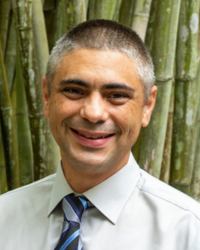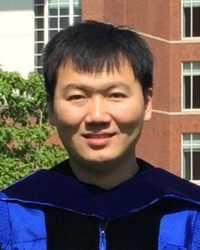UNF MedNexus Research Innovation Fund
The MedNexus Research Innovation Fund aims to support faculty conducting research that integrates emerging technology to improve health outcomes, delivery of care, or direct clinical impact.
Eligibility
Scope of Funding
Application
Review Process
- Scientific rigor
- Inclusion of student assistance (undergraduate or graduate)
- Clear plan for high-impact manuscript publication, external funding, and/or patents
- Inclusion of industry partners
- Potential for impact on health and biomedical outcomes
Timeline
The proposal window opens on January 31, 2024, and closes March 3, 2024. Finalists will be notified and scheduled for in-person interviews by March 14, 2024. Final awards will be announced by April 15, 2024, and funding will be available by July 1, 2024. Funding must be used within one academic year. Faculty awarded an MedNexus Research Innovation Fund grant are eligible to submit for funding to continue their work.
Commitment
Awardees must:- complete a progress report six months after award and a final report.
- present a poster or panel presentation at regional healthcare events and conferences.
- coordinate with Marketing and Communication to showcase scholarship through media.
- submit for external funding
2024 - 2025 MedNexus Research Innovation Fund Scholars

Dr. Christopher Oshman, Mechanical Engineering
Development of Single-Use Passive Micro-Fluidic Sensors to Detect Traumatic Brain Injury
This study will develop a low-cost, accurate, passive sensor to detect impacts and shocks that contribute to Traumatic Brain Injury (TBI) in sports. The technology uses a 2D membrane that ruptures upon high acceleration, mixing two fluidic chambers, indicating a shock threshold. If successfully demonstrated, this technology may be widely deployed in protecting athletes from the cumulative damage of TBI.

Dr. Nicole Nissim, Psychology
Noninvasive Brain Stimulation Effects on Memory and Gamma Oscillations in Mild Cognitive Impairment
This project explores the impact of a two-week intervention of noninvasive brain stimulation and memory training on memory performance and gamma brainwaves in individuals with mild cognitive impairment (MCI). Gamma brainwaves, which are critical for memory processing, become impaired in MCI. Transcranial alternating current stimulation (tACS), a noninvasive brain stimulation technique that shows promise for enhancing memory processes, will be examined with EEG to assess the effects of tACS on gamma brainwaves and behavior in individuals with impaired cognition

Dr. Guilherme Cesar, Physical Therapy
Improving Care Delivery to Children with Cerebral Palsy Using Emerging Motion Capture System Technology
Cerebral palsy, the most common childhood disability worldwide, hinders typical development, impacting children’s ability to walk and control balance which, in turn, negatively restricts children’s participation in life and family activities. Although full biomechanical evaluations involving motion capture can provide clinical guidance to improve children’s balance and walking, this evaluation is limited to many children with cerebral palsy given traditional motion capture procedures may not be tolerated. Recent technology overcomes these issues, resulting in the potential to positively impact children’s participation and quality of life.

Dr. Xudong Liu, Computing
Mobile-App-based Pulmonary Disease Detector Using Personal Medical Devices and Artificial Intelligence
To increase accessibility to healthcare and reduce cost thereof, researchers propose developing an AI-powered system, called Mobile Application Based Pulmonary Disease Detector (MAPD2). This system aims to utilize handheld and non-invasive devices to collect patient data such as electrocardiograms, perform pulmonary disease (e.g., chronic obstructive pulmonary disease) predictions using state-of-the-art AI algorithms, and visualize and present the results to the patients and doctors for further medical decision making.

Dr. Szymon Ciesielski, Chemistry & Biochemistry
Exploring the Role of Molecular Chaperones in Carcinogenesis
In the process of carcinogenesis, numerous biochemical pathways are hijacked to promote rapid growth and uncontrolled proliferation of cancer cells. That includes increased activity of molecular chaperones, proteins essential for production and quality control of virtually all other cellular proteins. Researchers are investigating if specific genetic changes are the driving mechanism behind this behavior of molecular chaperones benefiting developing cancer.

Dr. Upulee Kanewala, Computing
MT4BioMedLLM: Towards Safe and Reliable Use of Large Language Models for Health and Medical Applications
BioMedical Large Language Models (BioMed LLMs) are increasingly being applied in many critical health and medical applications such as medical question and answering, clinical report generation and classification, and International Classification of Diseases coding. For these applications, BioMed LLMs are used as base models and are further "fine-tuned" using application-specific datasets to obtain the highest possible accuracy. However, when it comes to health and medical applications, other quality attributes, such as trustworthiness, robustness and fairness, are equally important. Thus, in this project, researchers seek to develop MT4BioMedLLM, a framework to critically assess various quality attributes of these health and medical applications that use LLMs. Since the use of LLM-powered tools for health and medicine is expected to proliferate in the coming years, this work, which ensures the quality of the outputs, will have significant implications for both the providers and the patients.
